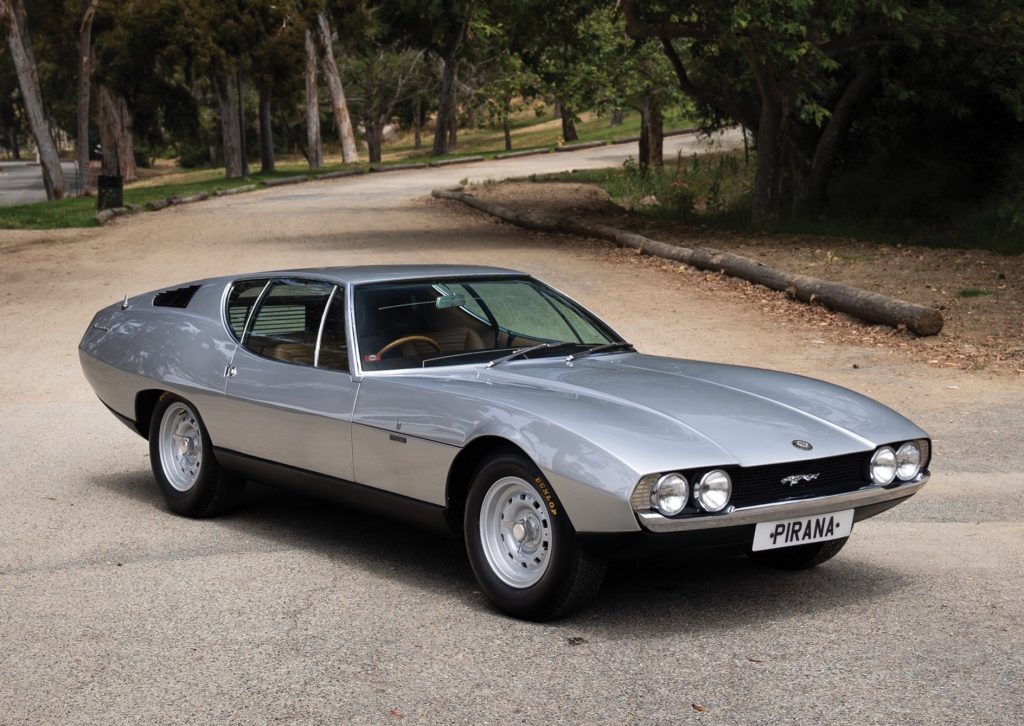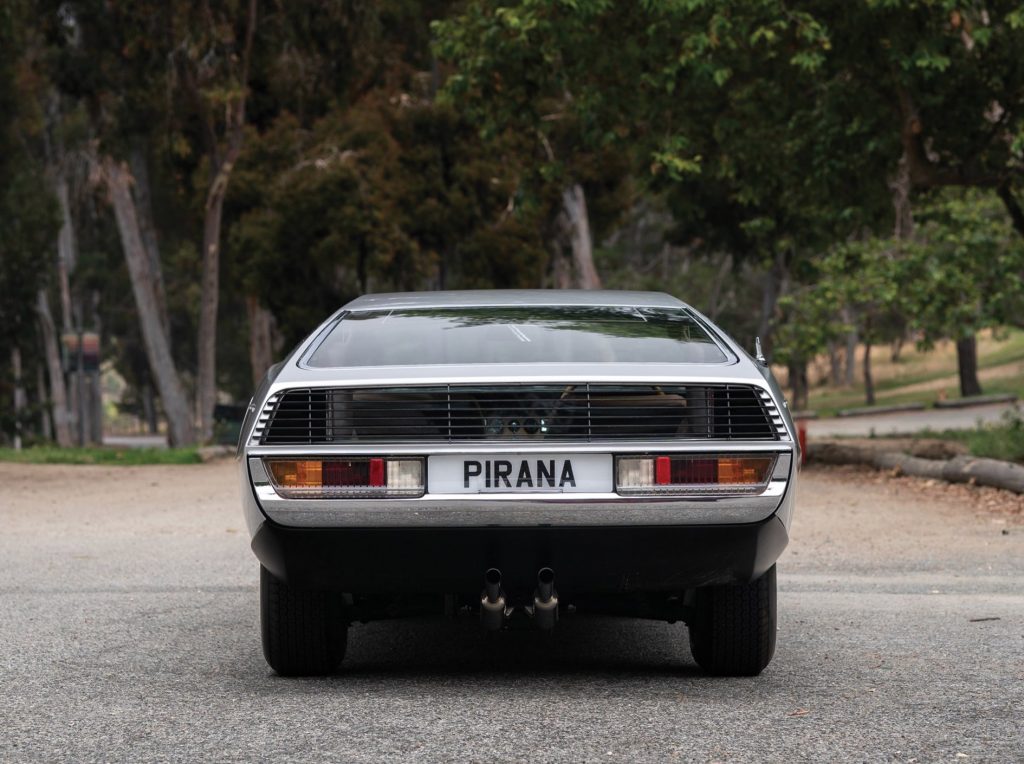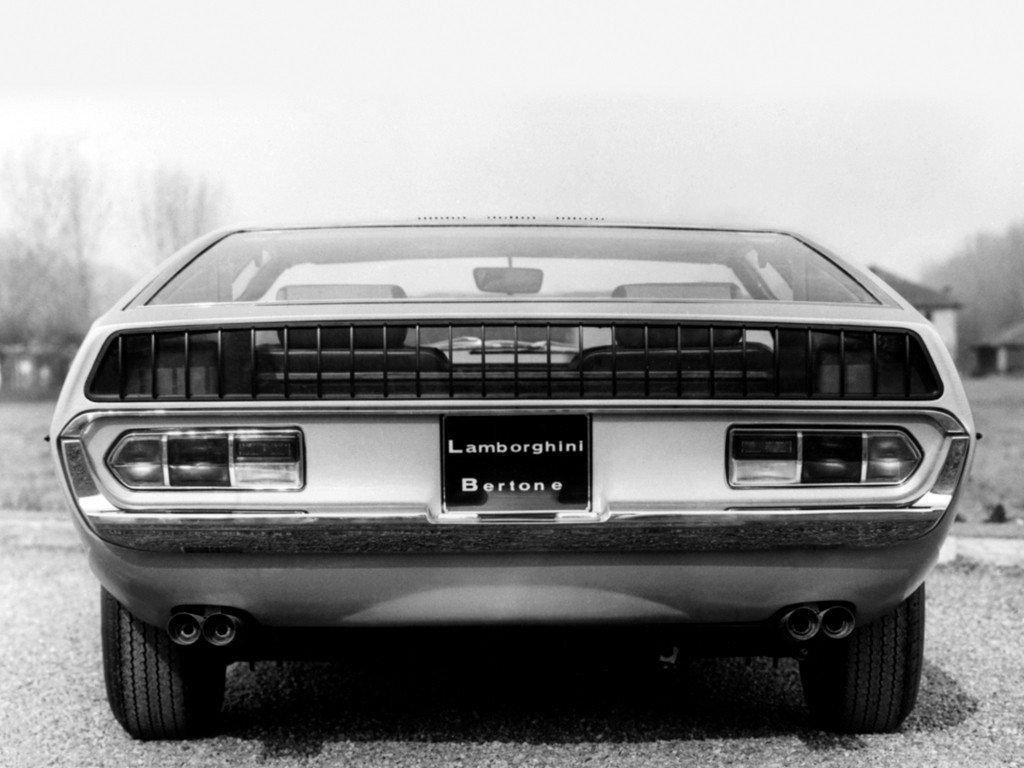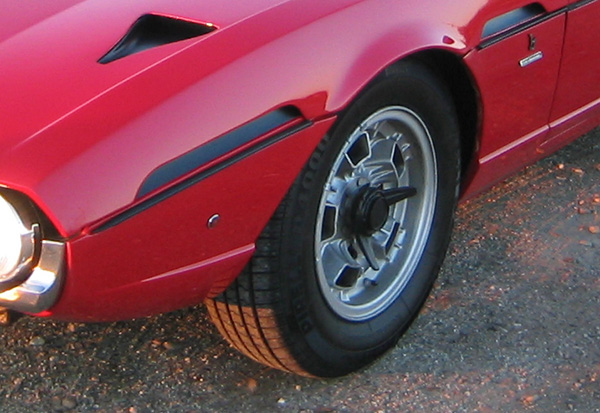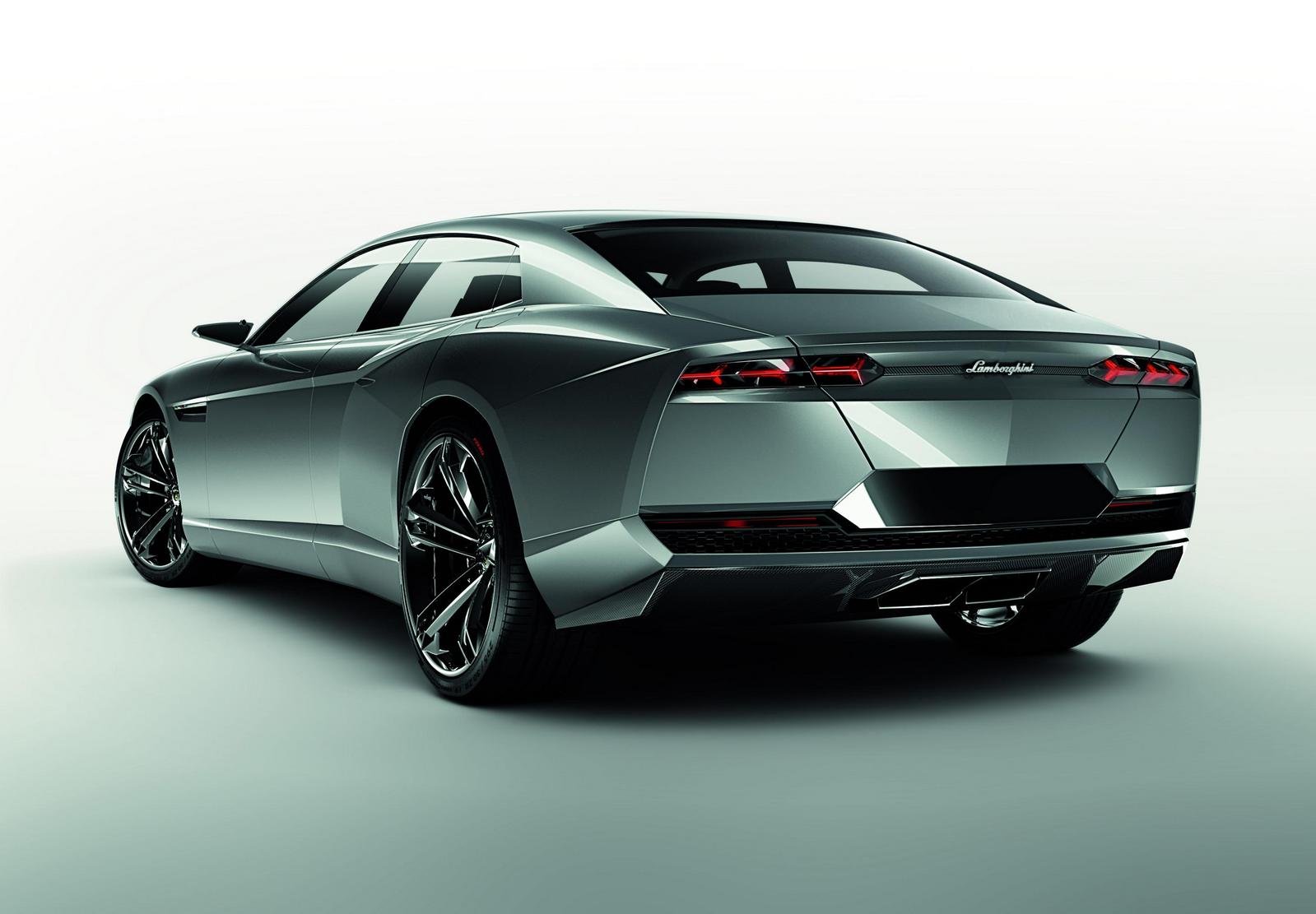
“The Rolls-Royce is a good car. It is quiet and comfortable and quite fast, but it is too upright and stodgy.” said Ferruccio. “In Italy we need a car with every luxury for those who want to travel far and fast and can afford it. But it must have style and it must be beautiful. That is even more important than convenience”.
At this time in 1965, it was a year ago he had started the production of his first car the 350 GT and Ferruccio Lamborghini had ambitions to expand the production line with two new models. A 4-seater to be produced at the rate of 2000 per year and a sports car in very limited production for carefully selected customers. They were to be built on the same chassis called the TP400 and both with transverse motor. However, for the sake of space, the four-seater should have a smaller engine, a V6 based on the existing V12.
The birth of the Espada took some detours at the beginning as the small design team of young engineers, designers and Ferruccio himself had very different ideas to how the car should be, but never the less the main development took less than a year which was impressive for a small new car manufacturer.

1965 – One chassis for two future models
Lamborghini’s three top engineers Gian Paolo Dallara, Paolo Stanzani and Bob Wallace dreamed of building a race car that would also be usable on the road and therefore spent all their free time in developing a chassis mainly for this purpose. Although Ferruccio believed that such a car would be too expensive and too far from his vision, he allowed the three young engineers to continue their work as the car could always be used for marketing.
The result was the TP400 rolling chassis with a transverse engine layout that had not been seen in any road-going car yet. However, it was hard to see how this new race oriented chassis also could be suitable for a four-seater.
The TP400 chassis (in short for Trasversale Posteriore 4 Litri) was first shown at the 1965 Turin Motor Show and was fitted with the brand new 4-liter version of the Lamborghini V12 to replace the current 3.5 liter used in the 350 GT. This upgraded engine, with an increased bore by 5 mm to 82 mm, now produced 320 Bhp @6500 rpm.
The chassis was a huge success at the show and rumors said Lamborghini would now challenge Ferrari on the race track, but this was never Ferruccio’s intention. With the tremendous attention that the chassis attracted, Ferruccio decided to find a coachbuilder to build a body for a concept car to be the fastest, most expensive and spectacular sports car ever built. In addition to the sports car concept, the platform also had to be used for the four-seater which he considered a good lucrative business while the sports car was only show off for attention and marketing, however, this was not entirely the case.
1967 March – The Marzal
Once again, Lamborghini took on the headlines and attention at the Geneva Motor Show 1967 with the Marzal concept car which was an extreme futuristic four-seater with huge gull-wing doors, and the seats, center console and the bottom of the door frames were lined with silver leather that looked like chrome in the best space age style.

The glass area was enormous and everywhere on the car there was hexagonal geometry which the young and talented designer Marcello Gandini from Bertone was very inspired by at this time. Gandini choose two large doors since four doors on the relatively short chassis would be too cramped and easy access to all seats were important.

A year before, the Miura prototype took the show by storm and by now the first Miura’s was already delivered to their owners. It was an easy task for Dallara, Stanzini and Wallace to modify the racy chassis for a road going sports car and Gandini’s Miura body was a beautiful and perfect fit for the ultra-low TP400 Chassis. The three skilled engineers spent only two months transforming the running chassis into the first Miura prototype, which Wallace parked outside the Casino in Monaco the night before the Grand Prix. The Miura simply stole the limelight from the Grand Prix.
In contrast, it was no easy task to base a four-seater on the TP400 chassis. Dallara had to extend the chassis by 120 mm to make room for four seats and the engine had to be placed behind the rear wheels. Ferruccio wanted it to be powered by a half Miura engine, which suited Dallara nicely, so he simply split the V12 engine right down the middle to an inline V6.

Ferruccio enjoyed the attention the Marzal attracted at the Geneva show, but he was horrified when he saw the car for the first time. “It is a good show car” he said, “but I will never make another”. 10 years earlier, Ferruccio had owned a Mercedes 300 SL gull-wing and he did not share Gandini’s enthusiasm for the gull-wing glass doors, saying “Such doors offer no privacy, a lady’s legs would be there for all to see“.

Dallara was having problems in developing the Marzal concept to a production car and since Ferruccio had rejected the overall design and wanted the sedan to have more power than the V6 could deliver, it was time to move on for a new prototype. He still believed in a four-seater with a small engine but he did not have the workforce to develop a completely new and more powerful small engine so he decided that the new prototype would have to use the Islero’s V12.
1967 October – The Pirana

While Ferruccio and his engineers thought about how the upcoming prototype should look like, Bertone was given a new assignment from an unexpected quarter. The British newspaper The Daily Telegraph wanted a show car for The London Motor Show that could create awareness of their new section “The Weekend Telegraph”. The perfect car was to be created for their readers and it should be targeted at the wealthy couple who liked sporty cars but would not compromise on comfort. Very much in line with Ferruccio’s ideas for his upcoming four-seater.

Nuccio Bertone gave the job to Gandini, who reused some of the main lines from the Marzal but designed a car that was far more down to earth and much more well balanced. The large gull wing doors were gone, and the futuristic interior was replaced with a classy and modern look, and the car as a whole looked like a production-ready model.
The Pirana was based on the Jaguar E-type 2 + 2 that had been presented seven months before at the Geneva Motor Show 1967. The complete rolling chassis, provided by Sir William Lyons (Mr. Jaguar) himself, was unchanged and the engine was the same 4.2-liter version of the Jaguar’s 6-cylinder XK engine that delivered healthy 265 hp.

The Pirana had its debut at the 1967 London Motor Show where it was incredibly well received by the audience and also Ferruccio was excited about the Pirana concept car which was far closer to his vision of a four-seater Lamborghini than the Marzal was.
After the Pirana was also exhibited in New York and Montreal, the newspaper sold it for £16,000 to cover some of their expenses for the project. In the following years, the Pirana was modified and had installed an automatic gearbox and the original silver color was resprayed in a very jag-like forest green.
In August 2019 the Pirana was sold for $324,000 at RM Sotheby’s Auctions after undergoing a major restoration back to its original appearance from the London Motor Show.

1968 The Espada prototype
Ferruccio and the engineers had to admit that the original idea of using the same chassis for a two-seater mid-engined sports car and a four-seater GT was far from optimal. The Islero now in production had inherited its chassis from the discontinued 400GT (2+2) and was also too small so there was no way around building a new chassis for the four-seater that could also accommodate the V12 engine.
It’s not clear exactly when the build of the Espada prototype began, but it must have been short after Bertone had finished the build of the Pirana since the wooden body buck made for the Pirana was also used in the construction of the Espada prototype.

The prototype was never presented to the public, but it was an important step for the development of a new chassis with room for four people and the large V12 engine. The engine was moved to the front as there was no room for a rear-mounted and the hexagonal grille over the rear window was removed for better visibility. This new chassis was again based on the TP400 chassis but with a lot of modifications like a stiff propeller-shaft tunnel, square tubes at the front and back providing mountings for the suspension, engine and final-drive.
The prototype looked like an unsuccessful merger between the Marzal and the Pirana and Ferruccio must have been somewhat surprised at the young and strong-willed Gandini who insisted on gull-wing doors as he knew Ferruccio did not like them, and which Ferruccio had to emphasize with a rejection of the doors once again. However, this battle won Gandini 3 years later where he was allowed to keep his upward doors on the Countach LP400.

Although the appearance of the prototype did not fall as Ferruccio had hoped, it was a great help in setting up the geometry of the car and for test driving so now Gandini was tasked with fine-tuning the prototype’s design for the final production model. Ferruccio wanted the new four-seater much more towards the Pirana, and fortunately for Ferruccio, the Pirana was not made by a competing automaker and therefor he did not hold back with demanding much of the Pirana’s design reused.
Marcello Gandini went back to the drawing board and few weeks later he came up with a much more elegant and stylish looking car which was exactly what Ferruccio had dreamed of.

The car was long, low and eye-catching and had the right mix of elegance and sportiness. The rear seat space was large enough for two adults to sit reasonably comfortably and there was even room for 280 liters (10 cubic ft) of luggage under the almost flat rear hatch without blocking vision.

Adopted from the 400 GT, the engine offered 325 bhp @6500 rpm and was fitted with Lamborghini’s own 5-speed gearbox with a hydraulic clutch. It was still a state-of-the-art engine with its four chain driven overhead camshafts and all-alloy crankcase and cylinder heads. It was fed by six horizontal Weber DCOE twin carburetors and no less than 14.3 liters of oil and 14 liters of coolant ensured a healthy and cool engine.
The chassis had a semi-monocoque structure and was made of a mixture of sheet steel pressings and foldings together with large square section tubes. Along with a double-layer propeller-shaft tunnel, this design helped to ensure enough rigidity to pass both the European and American crash tests, and to ensure sporty driving characteristics.

The suspension was fully independent on all four corners, consisting of unequal length double wishbones, coil springs, and Koni hydraulic shock absorbers, paired with anti-roll bars front and back. The top wishbone was shorter than the bottom wishbones in order to keep camber change under roll to a minimum.
The braking system relied on four wheel disc brakes controlled by two circuits each having its own Girling vacuum servo – which was unusual at the time, especially for a four-seater.
As a major manufacturer of air conditioning and heating systems, air quality was important to Ferruccio, so the car was equipped with an advanced fresh air system for both front and rear passengers.

The two large NACA ducts in the large aluminium front hood did not fed the carbs, but provided the cabin with fresh air. Front side windows were electric and the rear side windows were hinged to swing out from the top.
Exactly one year after the reveal of the Marzal the definitive Espada was ready and the production prototype was exhibited at the 1968 Geneva Motor Show and this long, low and wide car, painted in a metallic gold, caused a sensation at the show. Lamborghini and Bertone had in less than a year created a whole new super sedan and for the third year in a row they were the stars of the Geneva show.

With a maximum speed of more than 150 mph (241 kmh) it was the fastest four-seater to date and with a length of 4738 mm, a width 1860 mm and height of only 1185 mm it is still today the lowest four-seater ever produced. These unusual dimensions along with Gandini’s brave but elegant design resulted in a car that really stands out from the crowd and which most people have a strong opinion on. Either you love it or hate it. I have noticed that most designers, architects and car-nuts find the design amazing while others thinks it’s to odd. Beautiful you probably won’t call it while adjectives like stylish, extravagant, cool and unique are often heard.
Only very few details were changed from the show car to the first production cars such as the Miura style flick switches and a futuristic looking steering wheel. Ferruccio had finally achieved his dream of building an “Italian Rolls Royce” and it would prove to be Lamborghini’s greatest success in the ensuing decade.
Series I – March 1968 to November 1969 (186 units produced)
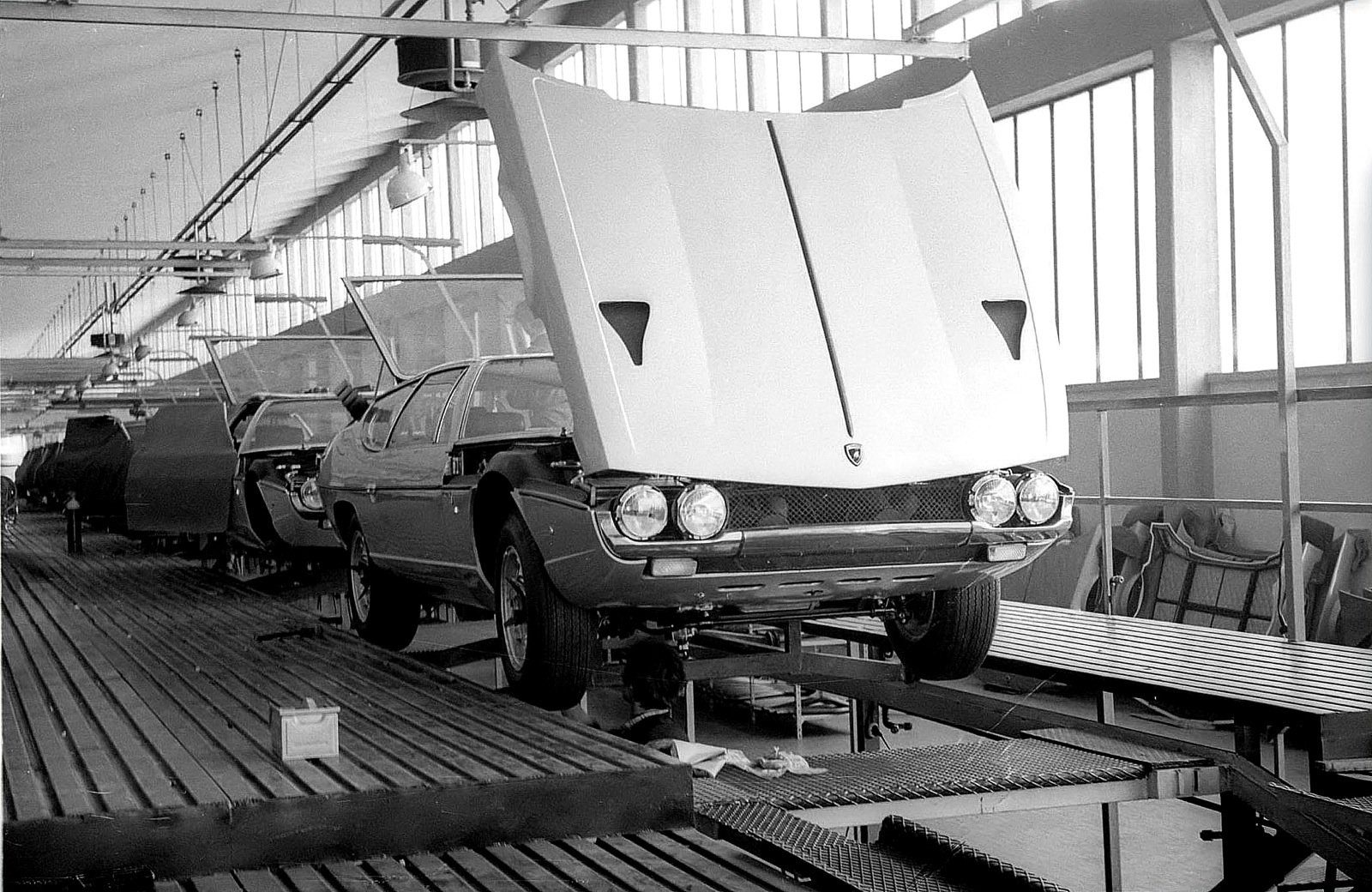
The real production of the Espada 400 GT began in the summer of 1968 and the earliest cars can be identified by some minor details; A grille was mounted at the rear window, the quarter light glass could open and the headrests was (too) low.
All these details were quickly abandoned and during the production of the Series I cars, other improvements were implemented; The four disc brakes all started with being unventilated but during the production the front discs were upgraded to ventilated. Furthermore, the car was calculated for Italians at 170 cm tall so it quickly became apparent that the head space was too limited. This was solved by lowering the floor under the seats by 20 mm.
Power steering was tested on early cars but was not standard before the introduction of the third and final series.

37 Espada’s were built during 1968 and in November 1969 the last series I car ran of the production line after only 186 were built which makes the series I cars the rarest and sought after Espada’s today.
Series II – December 1969 to November 1972 (575 units produced)
The series II, which actually was named the “400 GTE Espada”, was first shown at the 1970 Brussel Show, and was introduced with several new improvements. Once again the brakes was upgraded with now ventilated discs on all 4 wheels and the old Girling brake boosters MKIIa was replaced with the newer MKIIb. Another welcomed upgrade was the increase of engine power from 325 bhp @6500 rpm to 350 bhp at @7500 rpm by using the engine from the Miura/Islero S. Suspension springs were made slightly stiffer, optional Power Steering became official and the air flow for rear-seat passengers was improved.
The interior was redesigned by Bertone and the most noticeable improvements could be seen in the cockpit where the hexagons was replaced by a more classical look with all dials mounted on a wooden back panel. The glove compartment now also had a lid so it was no longer open like the Miura.

Today we see that many changes to the 3 different series were not carried out systematically as there are many examples of newer models that were supplied with discontinued components and vice versa. Part of the explanation is that some customers were allowed to opt for equipment that was not really an official option yet and that the financial crisis in the early 70’s meant that they had to use older parts that they already had in stock.
Towards the end of the series 2 production, the Miura style wheels with center locks were changed to the more anonymous five bolt rims which was also used for the Jarama. Both types were manufactured by Campagnolo and made of ultra-light magnesium.
At the outside nothing really was changed beside the wheels and rearlights, and the Series II cars kept the clean but unusual lines designed by Gandini.

Ten months after the SII was introduced , Lamborghini wanted to attract new attention to the Espada in the competition between the many fantastic cars presented in 1970. Nuccio Bertone did so with great success at the Paris Autoshow 1970 where he himself presented the ‘Bertone V.I.P. Espada’ which was equipped with a TV, a minibar and a fancy two-colored leather interior.

A few months after the 1970 Paris Motor show, the first Espada with the Bertone VIP leather interior was delivered to a customer, and a total of 12 Espadas were delivered with this probably unofficial option until 1973. About nine SII and one SIII Espadas with VIP interior are known to exist today making them among the rarest Espadas.
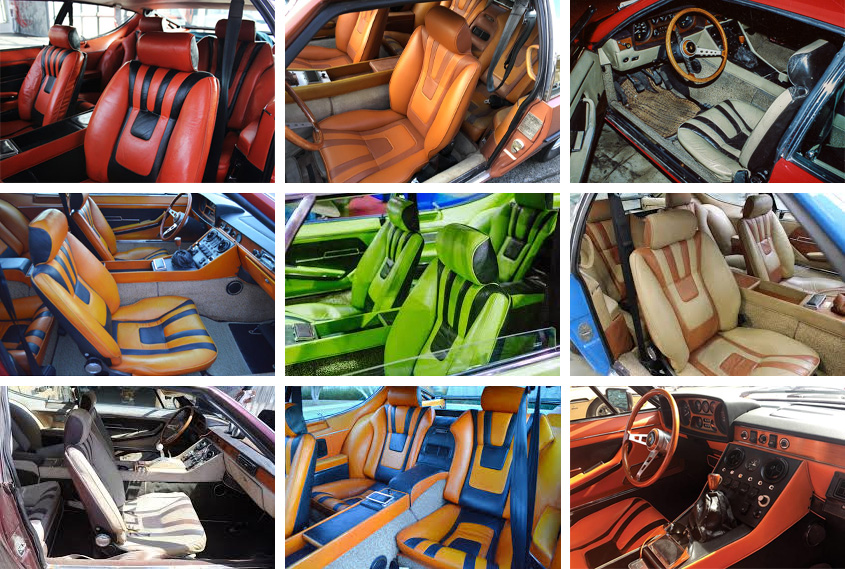
In 1972, Lamborghini was also hit by the international recession and oil crisis so instead of spending resources on a brand-new version of their best selling car, they decided that Series II should now be replaced by an updated Series III. 575 series II cars were produced.

Series III – December 1972 to summer 1978 (456 units produced)
The third version of the espada (officially called the 400 GTS) was introduced at the Turin show in 1972 and could from the outside easiest be identified on the restyled front grill and new rear lights borrowed from the Alfa Romeo 2000.
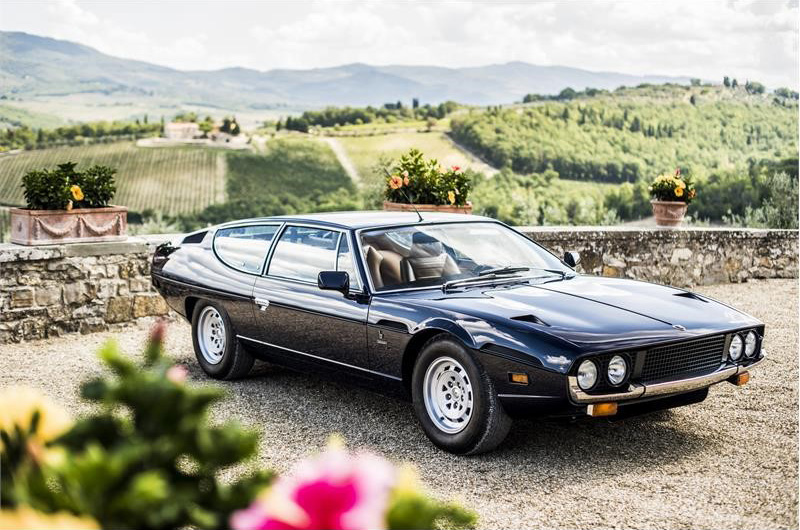

Once again, the instrument panel was updated with driver-centric instruments with aluminum trim and the classic wooden Nardi steering wheel was replaced by a more modern leather-covered one. An improved ZF power steering became standard and the braking system was again upgraded to be more powerful. Air conditioning which was previously an option was now standard, springs and shock absorber rates were revised, and the rear suspension arms were modified.
In March 1974 an automatic 3-speed transmission from Chrysler was offered mainly for the US market. However, this gearbox was never a success as the full throttle upshift was set to 4800 rpm which was 2000 rpm below peak power. The Chrysler TorqueFlite transmission was fine for a typical Detroit car but not for an Italian high-revving V12 sports sedan. Just 55 examples were built with the Chrysler automatic transmission .
Around 1974 U.S law required larger safety bumpers and indicator lights as well as new side marker lights which did not exactly contribute to the car’s clean design. These models were by some referred to as the model IV while the official model name still was SIII.

Although the Series III Espada was produced for the longest period, only 456 cars were produced in six years, compared with 575 in Series II in less than tree years. Sales were declining and profits were better on the bestselling Countach where virtually the entire car could be made in-house. So, in the summer of 1978 when a total of 1217 Espadas had left the assembly line and the Lamborghini company entered bankruptcy, the Italian courts took control and decided to stop the Espada production.
The Espada’s successor?
February 2020
There is no doubt that Lamborghini in recent years have considered a four-seater sports sedan as a complement to their super SUV Urus. Most competitors today have a four-seater sports car on the market such as the Porsche Panamera, Ferrari FF, Aston Martin Rapide, Jaguar XE SV Project 8 and Maserati Quattroporte GranSport GTS.
Back in 1999 a new Espada version was rumored to be in work but it was canceled when they chose to focus all design work on the successor to the diablo instead.

The Lamborghini Estoque concept car was first presented at the Paris Auto show in 2008 and was a four-door super sedan by many considered as the first true successor to the Espada. In March 2009 it was reported from the Lamborghini executives that production plans for the Lamborghini Estoque were cancelled due to sales and marketing considerations. What a shame, the timing was good and the look was much cooler than the successful Porsche Panamera also presented in 2009.
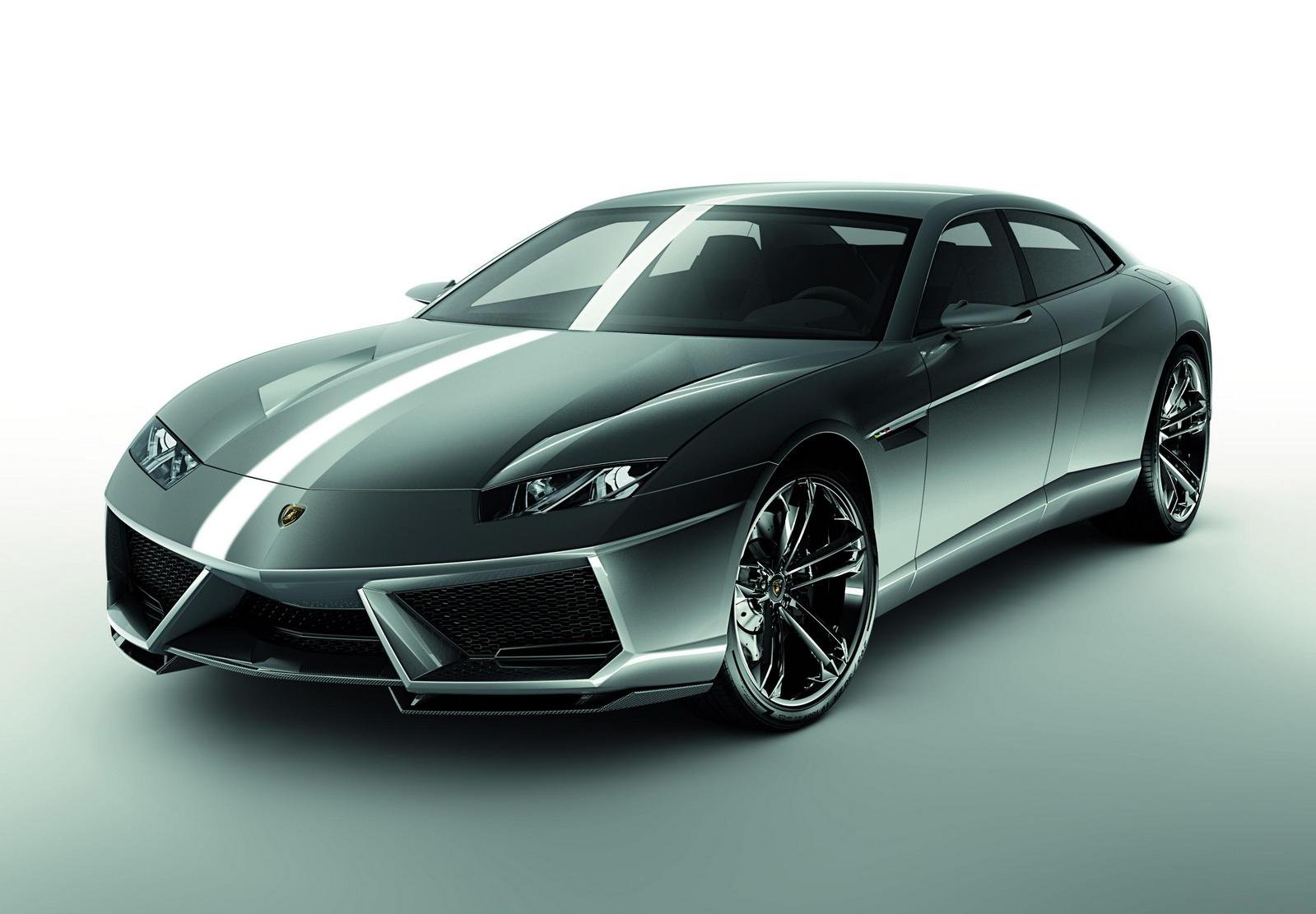
In a recent interview by Autocar with Lamborghini R&D boss Maurizio Reggiani he says “If you look at the timing for a fourth model line, there is the potential that this will be the right time for a full-electric vehicle,”. Even with such a traditional supercar brand as Lamborghini, one must expect that they also have to jump on EV/hybrid bandwagon sooner or later. The Volkswagen Group (who owns Lamborghini) currently have two platforms to build on, namely the J1 architecture used on the Porsche Taycan and the upcoming Audi E-Tron GT as well as the PPE platform which is designed for larger luxury cars. So it is likely that Lamborghini will use one of these platforms if they choose the direction of a pure electric car, but on the other hand, they have a large customer base and audience who probably many years ahead will prefer the amazing V12 which in my opinion still is the heart in a true Lamborghini.
Another beautifully design study called “M R Z L” based on the Marzal is made by Clément Alliot. Check out his amazing study here were he shows a complete proposal for a future four-seater hydrogen powered Lamborghini.


It is not to say what the future brings of technology but I think most carnuts will agree that the sensations of the sound, smell, look and feel of a truly mechanical V12 Lamborghini like the Espada will never go out of fashion.
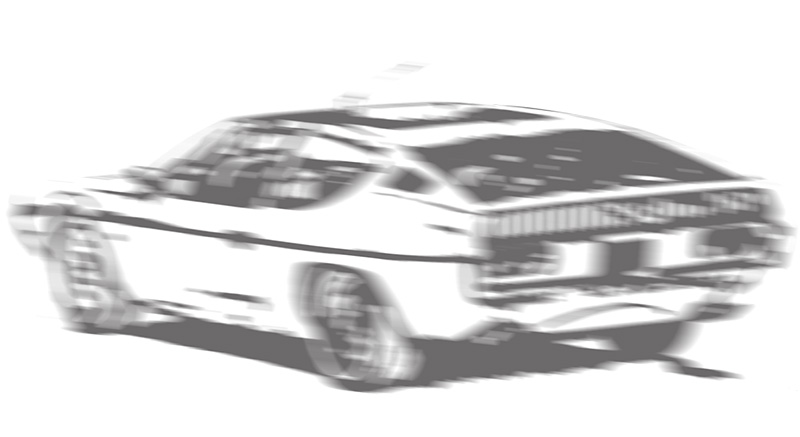
Inspiration, information and quotes are from the following great books:
“Lamborghini Espada & the 4-seaters” by Jean-Francois Marchet ISBN 0 85045 592 8
“The Lamborghinis – From 350 GT to Jalpa” by Chris Harvey ISBN 0 900549 69 6
“Lamborghini” by The Auto Editors of Consumer Guide ISBN 0 517 03601 0
Some photos in this article are found on public websites and are of unknown origin, and if you believe you own their rights and do not allow them to be used here please write to info@lamborghiniespada.com and they will be removed immediately.



